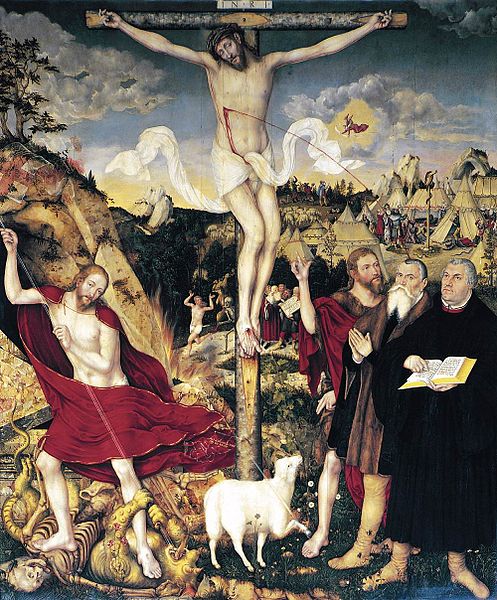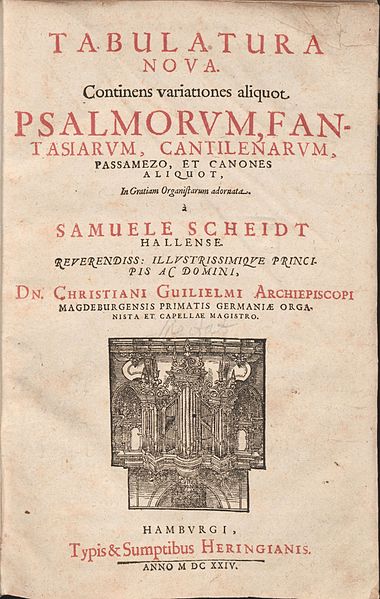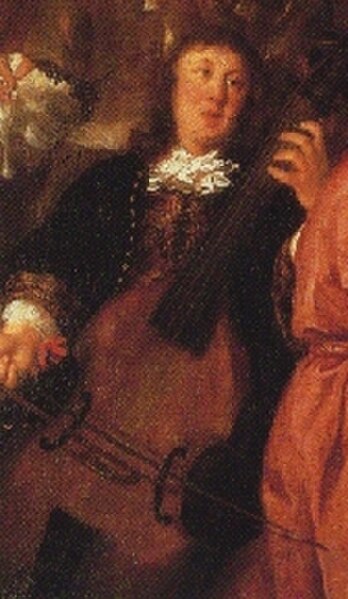The Orgelbüchlein BWV 599−644 is a set of 46 chorale preludes for organ — one of them is given in two versions — by Johann Sebastian Bach. All but three were written between 1708 and 1717 when Bach served as organist to the ducal court in Weimar; the remainder and a short two-bar fragment came no earlier than 1726, after the composer’s appointment as cantor at the Thomasschule in Leipzig.
The court chapel at the Schloss in Weimar where Bach was court organist. The organ loft is visible at the top of the picture.
Baroque organ in the Johanniskirche in Lüneburg, where Bach's teacher Georg Böhm was organist
Organ in St Blasius Church in Mülhausen, reconstructed in 1959 to Bach's 1708–09 specifications, with a third keyboard and 26 bell glockenspiel.
Cranach altarpiece in St Peter und Paul, where Bach played the organ
In music, a chorale prelude or chorale setting is a short liturgical composition for organ using a chorale tune as its basis. It was a predominant style of the German Baroque era and reached its culmination in the works of J.S. Bach, who wrote 46 examples of the form in his Orgelbüchlein, along with multiple other works of the type in other collections.
Title page of Scheidt's Tabulatura Nova
The only known painting of Buxtehude (detail, Johannes Voorhout, 1674)






